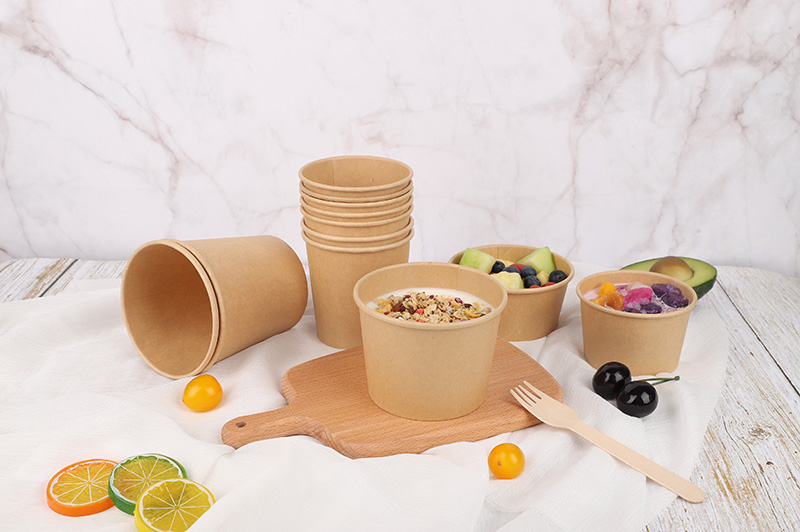BERKELEY, CA - APRIL 03: A student at the University of California, Berkeley carries a tray with ... [+] organic vegetables at UC Berkeley's Crossroads dining commons April 3, 2006 in Berkeley, California. UC Berkeley became the first American college campus to offer an organic salad bar prepared by a certified organic kitchen. The school expects to have all four of its campus food service run dining halls to offer the organic salad bar by spring 2007. (Photo by Justin Sullivan/Getty Images)
There are times when the numbers really do speak for themselves. Every year, nearly 1 trillion individual pieces of disposable food service products and packaging are used by restaurants and food service businesses in the United States. Paper Tableware

Around $24 billion is spent by restaurants and food-service businesses on disposable products each year on containers, cutlery and cups, equivalent to the weight of 25 Empire State Buildings.
It is perhaps not surprising that single-use food containers and cutlery are the third-most common form of litter found in the oceans.
Coming up with a system that keeps food containers in use and out of the oceans is going to be one of the key challenges going forward, as we move to a circular economy.
One company that has come up with a system to tackle this issue is the New York-based start-up Re:Dish, which offers a reusable container program to large organizations and schools, which aims to eliminate single-use waste.
“I had gotten to a point in my career where I wanted to build something that would have a significant impact,” explained Re:Dish founder and CEO, Caroline Vanderlip.
“As I looked around New York City, it occurred to me that waste is not just a significant issue, but a huge issue. If we could tackle the waste issue, it would help tackle climate change, as well.”
To this end, she began developing a company which could offer the back-end infrastructure to deliver container reuse at scale. The company usesreusable containers and cups, which have been certified to be able to be washed more than 1,000 times.
It then delivers the containers to the customer, collects them after use, and then cleans and sanitizes them at its state-of-the-art facility.
“We built this facility not to handle a few hundred a day, but to handle tens of thousands of containers every day,” she added. “We’ve built the software and developed very unique processes to bring them in, wash them and package them to go out again the next day.”
The company recently announced a partnership with School in the Square to replace all single-use containers in its Upper Manhattan schools with reusable wares.
They estimate the program will divert 216,000 containers – or 16,286 lbs – from landfills and reduce 23,689 kg of CO2e emissions, which equates to removing 1,879 cars from the road for a day.
“We’ve been searching for ways to reduce our carbon footprint and amplify our sustainability efforts, and this program is a major step in the right direction,” said Carrie Amon, founding principal at School in the Square.
“Our students and communities deserve a greener future, and we’re proud to lead by example.”
When it comes to implementing the new systems, Vanderlip said it soon becomes “second nature” for both the organizations and the people who work or study there.
“We think this is a way to start introducing people across the board into the principles of the circular economy, which is the only way we're going to dig ourselves out of this mess,” she added.
The company’s software system also provides the company or school with a real-time dashboard, which allows them to see how many containers are being collected and the impact it is having in terms of carbon emissions and water savings.
“The metrics that we give them can be used for ESG reporting, so not only are they able to show their employees that they are taking sustainability seriously, but they're also able to use the metrics from that to reinforce it.
“The other piece of our programme is that when we take a container or cup out of circulation, we actually grind it down and use it for cup lids. It is a closed loop system with the goal that these containers never end up in landfill.
Small Paper Plates “This is a real problem,” she added. “We've all seen the images of mounds of plastic waste. We believe very strongly that re-use is the answer.”